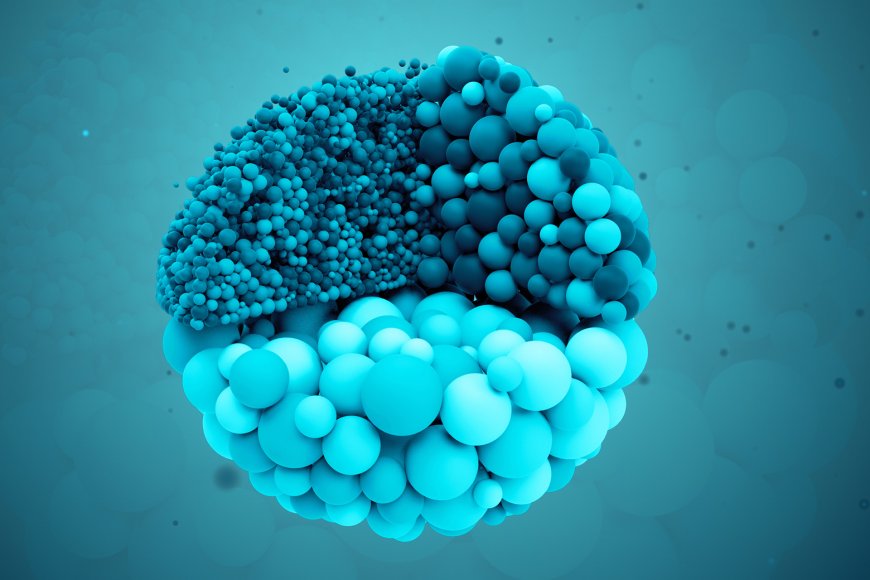Small Molecule Drug Discovery: The Process of Designing Medicines to Treat Disease
The small molecule drug discovery process begins by identifying an unmet medical need or disease target. Scientists work to understand the molecular mechanisms underlying disease pathology in order to determine potential biological targets for intervention.

Conceptualizing the Problem
The small molecule drug discovery process begins by identifying an unmet medical need or disease target. Scientists work to understand the molecular mechanisms underlying disease pathology in order to determine potential biological targets for intervention. This involves elucidating cellular pathways and processes that could be disrupted or modulated to achieve a therapeutic benefit. Researchers examine the roles of proteins, nucleic acids, and other biomolecules that may be driving or contributing to the disease state. By defining the problem at a molecular level, drug hunters can conceptualize possible solutions in the form of small molecule drugs.
Hit Identification and Validation
Once Small Molecule Drug potential biological targets are selected, high-throughput screening of large chemical libraries is used to discover "hits" - compounds that show an ability to bind to or interact with the target. These initial hits are usually weak and require optimization. Assays are employed to validate which hits are specifically interacting with the target of interest versus causing nonspecific or off-target effects. Researchers determine structure-activity relationships and gradually improve characteristics like affinity, selectivity, and potency through chemical modifications to the hit compounds. Hits that continue demonstrating the desired on-target activity in follow-up tests advance to the next phase of testing.
Lead Optimization and Preclinical Evaluation
The goal of lead optimization is to enhance the drug-like properties of hits and improve their pharmacokinetic and pharmacodynamic profiles. Medicinal chemists iteratively modify chemical structures to generate analogs of the original hits with improved selectivity, affinity, absorption, distribution, metabolism, excretion and toxicity (ADMET) properties. Lead compounds are thoroughly profiled in vitro and in vivo to understand safety and efficacy. Preclinical studies in animal models of disease help select lead candidates with the best balance of potency, selectivity, safety margins and developability attributes needed to qualify for clinical trials in humans.
Clinical Development
Once potential drugs, now called clinical candidates, have undergone rigorous preclinical evaluation, they progress to clinical trials in human volunteers and patients. Phase I studies assess safety, tolerability and pharmacokinetics in healthy participants to determine appropriate dosing. Phase II trials enroll small groups of patients to further evaluate safety and provide early signs of efficacy. Based on Phase II results, the most promising candidates advance to large Phase III trials to definitively establish safety and efficacy compared to current standard treatments or placebos. If successful, this data is compiled into a new drug application to regulatory agencies seeking approval to market the drug. Post-approval studies continue to further characterize the drug's safety profile as well as explore new uses (indications).
Computational Methods in Drug Discovery
In silico methods like molecular modeling and computational chemistry play an increasingly important role throughout drug discovery. Structure-based drug design utilizes three-dimensional structural information about biological targets to gain insights into molecular interactions and binding pockets. Researchers use computational tools to dock and score large virtual libraries of chemical structures in silico to predict and prioritize those most likely to bind productively to the target. Quantitative structure-activity relationships (QSAR) analyze correlations between chemical structures and biological activities to predict properties of untested compounds. Molecular dynamics simulations provide dynamical views of biochemical systems to understand mechanisms of disease and drug action at an atomic level. As computational power increases, in silico methods will continue enhancing drug discovery productivity through applications like hit generation, lead optimization, candidate profiling, and polypharmacology analysis.
Commercialization and Post-Approval Activities
If Phase III clinical trials demonstrate a new drug is safe and effective for its intended use, the developer can file for regulatory review and approval to market the medication. Launching a new drug is an enormous commercial undertaking that requires establishing manufacturing at scale, building out marketing and sales teams, and educating physicians. Post-approval activities continue to gather patient experience, study different populations, and explore new indications that expand the drug's clinical utility. Ongoing monitoring identifies any long-term safety issues to address as well as opportunities for further optimization through novel formulations or combination products. The entire development timeline from Hit identification to market approval typically spans over 10-15 years and costs over $2.6 billion on average.
Challenges and Small Molecule Drug Discovery
Bringing a new small molecule medicine from discovery to patients remains a lengthy, uncertain, and capital-intensive process. Major challenges include selecting appropriate disease targets, identifying hits with drug-like properties, optimizing leads while maintaining selectivity, demonstrating effectiveness through clinical trials, gaining regulatory approval, and achieving commercial success.
In Summary, emerging technologies like artificial intelligence and machine learning show promise for accelerating many parts of the drug discovery workflow through applications such as generating novel molecules, predictive toxicology, and advanced analytics supporting clinical development decisions. Combinatorial chemistry and high-throughput screening techniques continue enhancing hit rates from chemical libraries. As understanding of human biology deepens through systems approaches, the future of small molecule therapeutics will involve developing increasingly precise drugs that target multiple pathways underlying disease with improved safety profiles.
Get More Insights—Access the Report in the Language that Resonates with You
About Author:
Ravina Pandya, Content Writer, has a strong foothold in the market research industry. She specializes in writing well-researched articles from different industries, including food and beverages, information and technology, healthcare, chemical and materials, etc. (https://www.linkedin.com/in/ravina-pandya-1a3984191)












